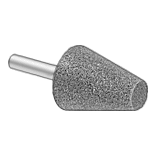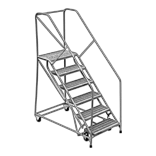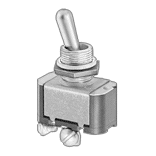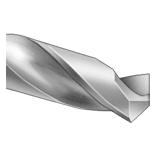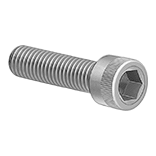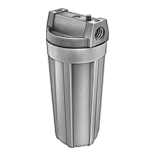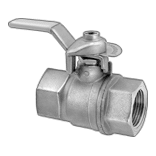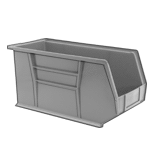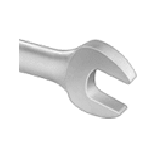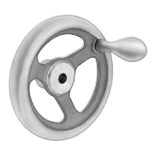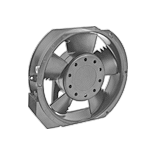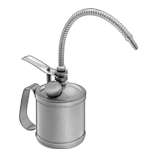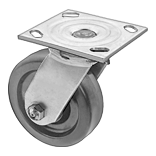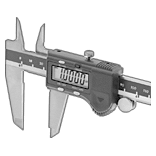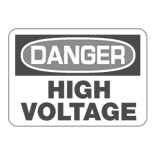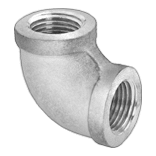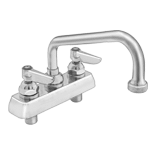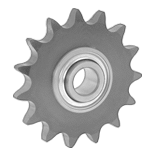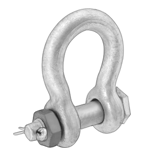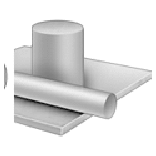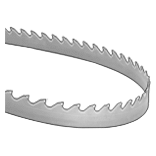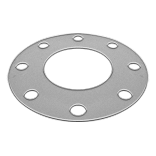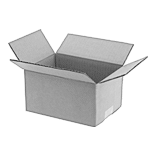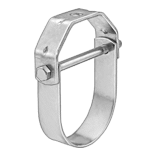Filter by
Reamer Diameter
Reamer Fractional Size
Reamer Type
Pipe Size
For Deburring
Spiral Direction
Material
DFARS Specialty Metals
Export Control Classification Number (ECCN)
Reamers for Hole Alignment
Enlarge holes to correct misalignment and overlap. Misaligned holes often have a narrow entry, so the tapered shape is easier to insert and makes more contact to remove the overlapping material. These are also known as bridge and car reamers.
Adjustable Size, Square Shank
Angled Blade |
One tool both finishes multiple diameters and enlarges holes to correct misalignment and overlap. Also known as bridge and car reamers, they have a tapered shape that fits into the narrow entry of misaligned holes and makes more contact to remove the overlapping material. Change the reamer size by moving the adjustable blades within the diameter range.
Move the blades by tightening and loosening the two nuts on the reamer. To measure size, adjust blades to a known size (such as a bushing or ring), or measure across two opposite blades with a micrometer. When the blades become worn, they can be reground or replaced.
Turn these reamers by hand with an adjustable wrench or straight-handle tap wrench (sold separately).
Angled Blade—These reamers are better than those with straight blades for finishing holes with breaks in the surface, such as a keyway.
Tool Steel—Typically more economical but less durable than high-speed steel, these are for general purpose reaming.
Long Reach—Align holes spaced far apart with reamers that have a long, built-in pilot. A floating sleeve guides and steadies the pilot through holes.
Reamers | Replacement Blades | ||||||||||||||||||||||||||||||||||||||||||||||||||||||||||||||||||||||||||||||||||||||||||||||||||
|---|---|---|---|---|---|---|---|---|---|---|---|---|---|---|---|---|---|---|---|---|---|---|---|---|---|---|---|---|---|---|---|---|---|---|---|---|---|---|---|---|---|---|---|---|---|---|---|---|---|---|---|---|---|---|---|---|---|---|---|---|---|---|---|---|---|---|---|---|---|---|---|---|---|---|---|---|---|---|---|---|---|---|---|---|---|---|---|---|---|---|---|---|---|---|---|---|---|---|---|
Lg. | |||||||||||||||||||||||||||||||||||||||||||||||||||||||||||||||||||||||||||||||||||||||||||||||||||
Reamer Dia. | Material | Square Shank Size | Pilot | Overall | No. of Blades | Performance | For Use On | Each | Pkg. Qty. | Pkg. | |||||||||||||||||||||||||||||||||||||||||||||||||||||||||||||||||||||||||||||||||||||||||
Angled Blade | |||||||||||||||||||||||||||||||||||||||||||||||||||||||||||||||||||||||||||||||||||||||||||||||||||
Inch | |||||||||||||||||||||||||||||||||||||||||||||||||||||||||||||||||||||||||||||||||||||||||||||||||||
| 0.4688" to 0.5313" (15/32" to 17/32") | Tool Steel | 0.1870" | 10" | 15 5/8" | 6 | Long Reach | Aluminum, Brass, Bronze, Fiberglass, Iron, Plastic, Steel, Titanium | 0000000 | 0000000 | 6 | 0000000 | 000000 | |||||||||||||||||||||||||||||||||||||||||||||||||||||||||||||||||||||||||||||||||||||||
| 0.5313" to 0.5938" (17/32" to 19/32") | Tool Steel | 0.2180" | 10" | 15 5/8" | 6 | Long Reach | Aluminum, Brass, Bronze, Fiberglass, Iron, Plastic, Steel, Titanium | 0000000 | 000000 | 6 | 0000000 | 00000 | |||||||||||||||||||||||||||||||||||||||||||||||||||||||||||||||||||||||||||||||||||||||
| 0.5938" to 0.6563" (19/32" to 21/32") | Tool Steel | 0.2810" | 12" | 18 5/8" | 6 | Long Reach | Aluminum, Brass, Bronze, Fiberglass, Iron, Plastic, Steel, Titanium | 0000000 | 000000 | 6 | 0000000 | 00000 | |||||||||||||||||||||||||||||||||||||||||||||||||||||||||||||||||||||||||||||||||||||||
| 0.7188" to 0.7813" (23/32" to 25/32") | Tool Steel | 0.3430" | 16" | 23 1/8" | 6 | Long Reach | Aluminum, Brass, Bronze, Fiberglass, Iron, Plastic, Steel, Titanium | 0000000 | 000000 | 6 | 0000000 | 00000 | |||||||||||||||||||||||||||||||||||||||||||||||||||||||||||||||||||||||||||||||||||||||
| 0.7813" to 0.8438" (25/32" to 27/32") | Tool Steel | 0.4060" | 16" | 23 1/2" | 6 | Long Reach | Aluminum, Brass, Bronze, Fiberglass, Iron, Plastic, Steel, Titanium | 0000000 | 000000 | 6 | 0000000 | 00000 | |||||||||||||||||||||||||||||||||||||||||||||||||||||||||||||||||||||||||||||||||||||||
| 0.9375" to 1.0625" (15/16" to 1 1/16") | Tool Steel | 0.5000" | 18" | 27 1/8" | 6 | Long Reach | Aluminum, Brass, Bronze, Fiberglass, Iron, Plastic, Steel, Titanium | 0000000 | 000000 | 6 | 0000000 | 00000 | |||||||||||||||||||||||||||||||||||||||||||||||||||||||||||||||||||||||||||||||||||||||
Reamers for Deburring
Smooth the inside and edges of holes with these reamers. Often used to finish holes in sheet metal or to remove burrs from the ends of cut pipe and conduit, they're also known as repairmen's reamers.
L-Handle Shank
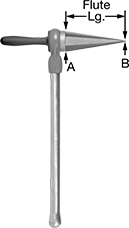 | 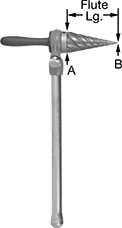 |
Straight Flute | Spiral Flute |
Turn these reamers with the long ratcheting handle, which provides more leverage than a T-handle.
Straight Flute—The most common flute style, these reamers are suitable for a wide range of applications, but not recommended for holes with a keyway or other breaks in the surface.
Spiral Flute—Since these reamers clear chips better than straight flutes, they leave holes with a smoother finish. They're better for holes with breaks in the surface, such as a keyway, because they cut continuously across the breaks instead of moving in and out.
Hardened Steel—Typically more economical but less durable than high-speed steel, these are for general purpose reaming.
Right-Hand Spiral—These reamers pull chips upward as they cut, so they're often used in blind holes.
Left-Hand Spiral—These reamers push chips downward as they cut, so they're often used in through holes.
Lg. | |||||||||||||||||||||||||||||||||||||||||||||||||||||||||||||||||||||||||||||||||||||||||||||||||||
|---|---|---|---|---|---|---|---|---|---|---|---|---|---|---|---|---|---|---|---|---|---|---|---|---|---|---|---|---|---|---|---|---|---|---|---|---|---|---|---|---|---|---|---|---|---|---|---|---|---|---|---|---|---|---|---|---|---|---|---|---|---|---|---|---|---|---|---|---|---|---|---|---|---|---|---|---|---|---|---|---|---|---|---|---|---|---|---|---|---|---|---|---|---|---|---|---|---|---|---|
For Pipe Size | Reamer Dia. (B to A) | Material | Flute | Reamer Handle | Ratcheting Handle | No. of Flutes | Spiral Direction | For Deburring | For Use On | Each | |||||||||||||||||||||||||||||||||||||||||||||||||||||||||||||||||||||||||||||||||||||||||
Straight Flute | |||||||||||||||||||||||||||||||||||||||||||||||||||||||||||||||||||||||||||||||||||||||||||||||||||
Inch | |||||||||||||||||||||||||||||||||||||||||||||||||||||||||||||||||||||||||||||||||||||||||||||||||||
| 1/8 to 2 | 0.2500" to 2.2500" (1/4" to 2 1/4") | Hardened Steel | 6 3/8" | 6 5/8" | 16" | 5 | — | Inner Pipe Edges, Inner Tube Edges, Inner Conduit Edges | Aluminum, Brass, Bronze, Copper, Iron, Plastic, Stainless Steel, Steel | 0000000 | 0000000 | ||||||||||||||||||||||||||||||||||||||||||||||||||||||||||||||||||||||||||||||||||||||||
| 3/8 to 3 | 0.3750" to 3.2500" (3/8" to 3 1/4") | Hardened Steel | 9" | 10" | 16" | 5 | — | Inner Pipe Edges, Inner Tube Edges, Inner Conduit Edges | Aluminum, Brass, Bronze, Copper, Iron, Plastic, Stainless Steel, Steel | 0000000 | 000000 | ||||||||||||||||||||||||||||||||||||||||||||||||||||||||||||||||||||||||||||||||||||||||
Spiral Flute | |||||||||||||||||||||||||||||||||||||||||||||||||||||||||||||||||||||||||||||||||||||||||||||||||||
Inch | |||||||||||||||||||||||||||||||||||||||||||||||||||||||||||||||||||||||||||||||||||||||||||||||||||
| 1/4 to 2 | 0.1875" to 2.2500" (3/16" to 2 1/4") | Hardened Steel | 5 1/8" | 6 7/8" | 16" | 6 | Right Hand | Inner Pipe Edges, Inner Tube Edges, Inner Conduit Edges | Aluminum, Brass, Bronze, Copper, Iron, Plastic, Stainless Steel, Steel | 0000000 | 000000 | ||||||||||||||||||||||||||||||||||||||||||||||||||||||||||||||||||||||||||||||||||||||||
| 2 1/2 to 4 | 2.3125" to 4.2500" (2 5/16" to 4 1/4") | Hardened Steel | 7" | 10 1/2" | 16" | 9 | Left Hand | Inner Pipe Edges, Inner Tube Edges, Inner Conduit Edges | Aluminum, Brass, Bronze, Copper, Iron, Plastic, Stainless Steel, Steel | 0000000 | 000000 | ||||||||||||||||||||||||||||||||||||||||||||||||||||||||||||||||||||||||||||||||||||||||
